Sheep are losing ground
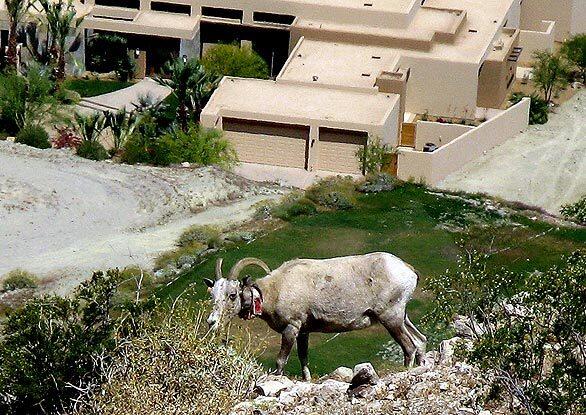
Collared for study by the Bighorn Institute of Palm Desert, a ewe nibbles above a multimillion-dollar development in Rancho Mirage. The peninsular bighorn once ranged from Mexico to the San Jacinto Mountains. (Leslie Carlson / Los Angeles Times)
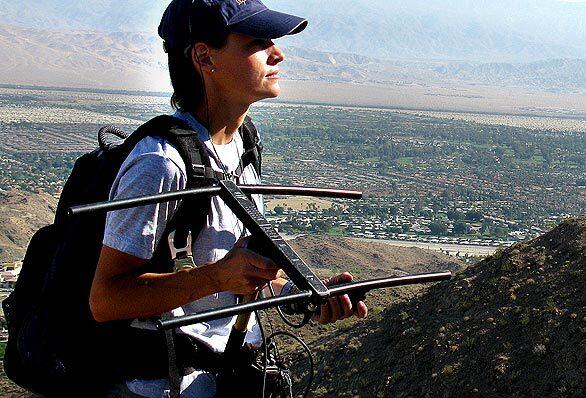
Wildlife biologist Aimee Byard uses radio telemetry equipment to search for bighorn sheep. She and other biologists are growing concerned that the sheep, an endangered species, soon may lose some of the protection that has helped them survive. (Leslie Carlson / Los Angeles Times)
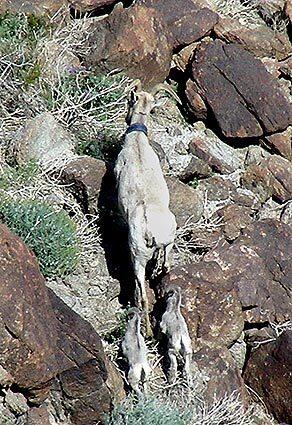
A rare pair of twin bighorn lambs follow their mother in the mountains above Palm Desert. Bighorn sheep are easily disturbed by human activities, and particularly susceptible to communicable diseases carried by pets and livestock. (Aimee Byard / Wildlife Biologist of the Bighorn Institute.)
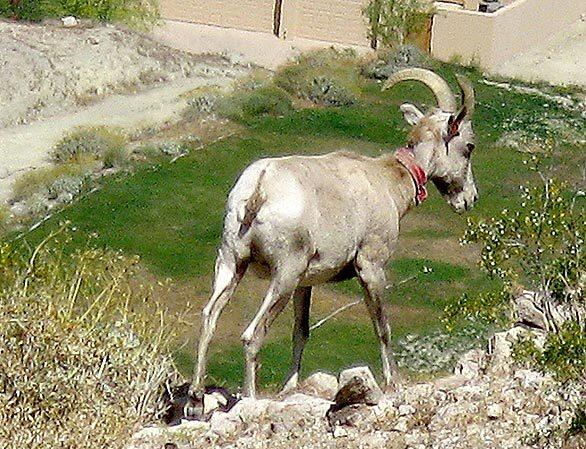
A collared ewe grazes above a development in Rancho Mirage. Federal officials declared the species endangered in 1998, and three years later, biologists drew a map of the territory they believed would be needed to help the species recover. . (Leslie Carlson / Los Angeles Times)
Advertisement
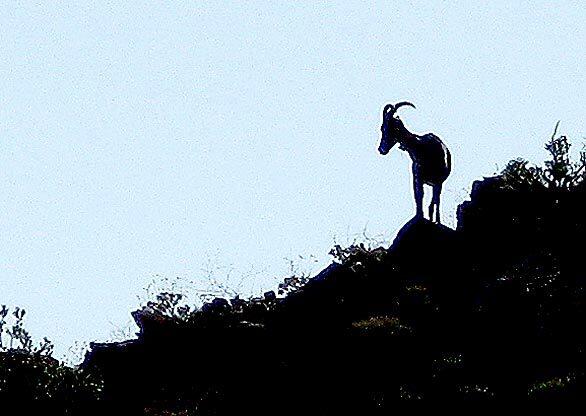
A bighorn sheep is silhouetted atop a rocky ridge above Rancho Mirage. Is the species’ long-term footing less secure? Many biologists and environmentalists think so. (Leslie Carlson / Los Angeles Times)







